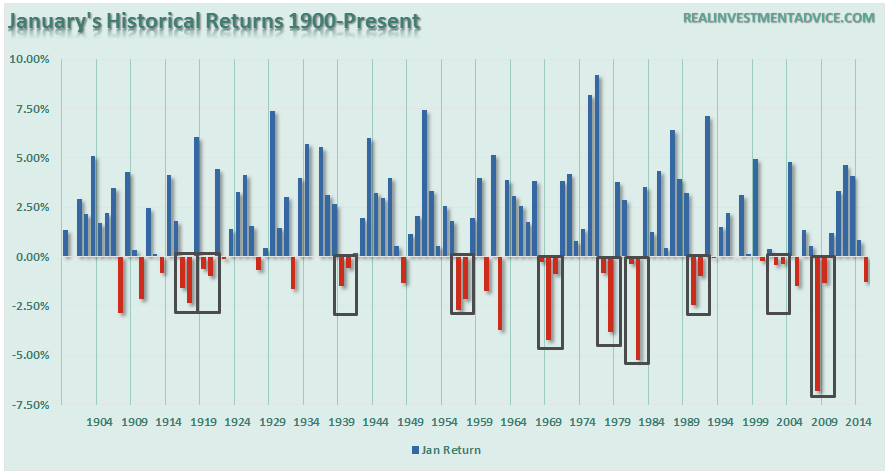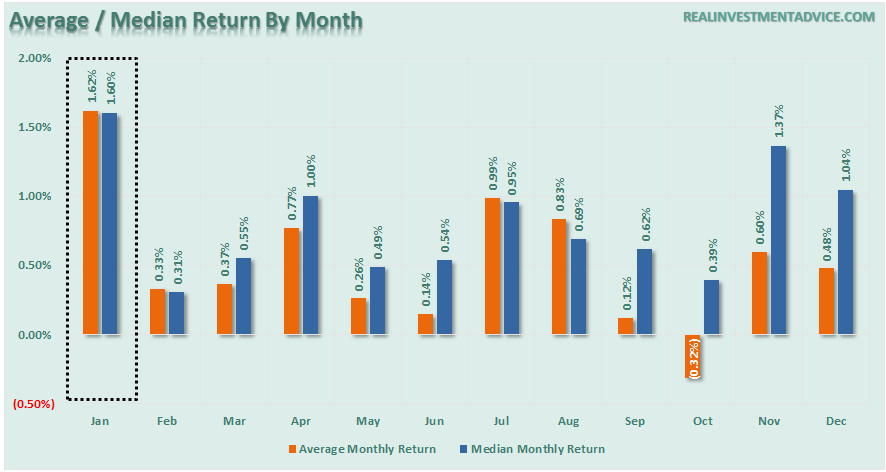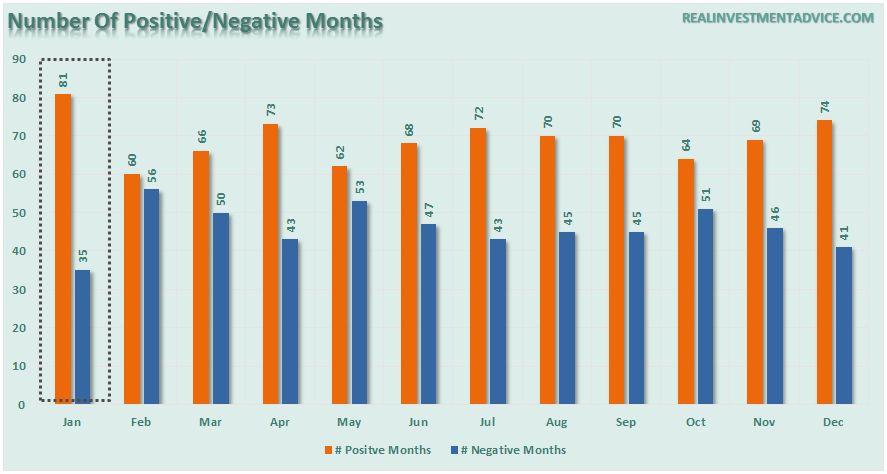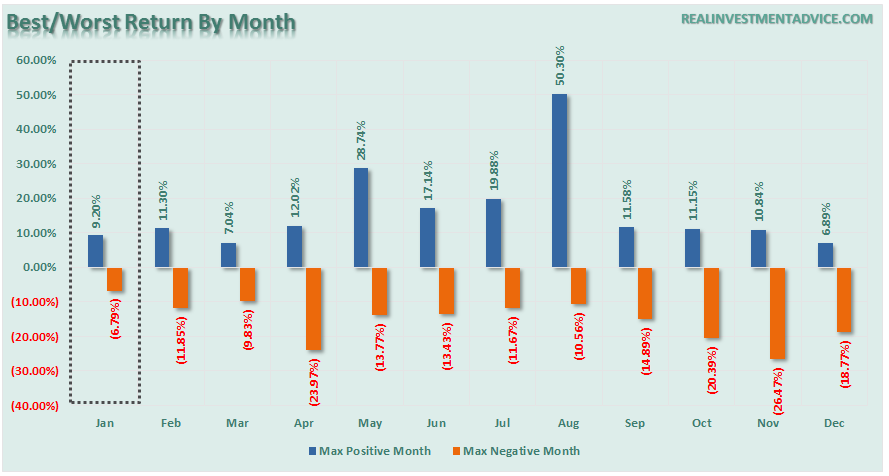Submitted by Tyler Durden on 01/04/2016 15:35 -0500
http://www.zerohedge.com/news/2016-01-04/pay-attention-things-are-beginning-get-interesting
Submitted by Lance Roberts via RealInvestmentAdvice.com,
There is an abundance of “Wall Street Axioms” surrounding the first month of the New Year as investors anxiously try and predict what is in store for the next twelve months. You are likely familiar with many of them from the “Superbowl Indicator” to “What Happens In The First 5-days Predicts The Month.”
Considering that trying to predict the markets more than just a few days in advance is mostly an exercise in “folly,” it is nonetheless a traditional ritual as the old year passes into the new. As Wall Street espouses their always overly optimistic projections of year-end returns, as discussed in this past weekend’s newsletter, reality has tended to be rather different.
However, from an investment management perspective, we can take a look at some of the statistical evidence for the month of January to gain some insight into performance tendencies looking ahead. From this analysis, we can potentially gain some respect for the risks that might lay ahead.
According to StockTrader’s Almanac, the direction of January’s trading (gain/loss for the month) has predicted the course of the rest of the year 75% of the time.
Furthermore, twelve or the last sixteen presidential election years followed January’s direction. Every down January on the S&P 500 since 1950, without exception, preceded a new or extended bear market, flat market or a 10% correction.
Starting from a broad historical perspective, the chart below shows the January performance going back to 1900.

I have boxed in when the month of January posted consecutive negative returns. You will note that most of those consecutive negative returns coincided with bear markets such as 2002-2003 and 2008-2009. With January 2015 posting a negative return, along with the market’s weak performance, a negative return for 2016 may be a more ominous warning.
The table and chart below show the statistics by month for the S&P 500.


The good news is the month of January has the highest average and median return of all months of the year. It also boasts the highest number of positive return months followed by December and April.

Furthermore, while January’s maximum positive return was just 9.2%, the maximum drawdown for the month was the lowest for all months at -6.79%.

While I don’t directly make asset allocation decisions based on monthly returns from a portfolio management perspective, the statistical weight of evidence suggests a couple of things worth considering.
The odds of January being a positive month greatly outweigh those of it being negative. Therefore, allocations should remain weighted more heavily towards risk currently.
However, given the length of the current bull market run from 2009 to present, the risks are mounting that January will likely have consecutive negative performance years which would confirm the ongoing market topping process I discussed previously. Such an outcome would suggest a more conservative approach to investment allocations.
This dichotomy reminds me of the scene from “The Princess Bride” where the “Sicilian” is in a “Battle Of Wits” with “The Dread Pirate Roberts.”
While it may seem confusing, for investors it comes down to time frames.
For short-term traders, the odds are high that January will post a positive trading month, therefore, allocations should remain tilted towards equity related exposure. If you are a nimble trader and can adjust for the swings in the market, the “odds are in your favor.”
However, for longer-term investors, particularly those that are nearing retirement, risks are mounting to the downside. Such potential outcomes suggest a more cautious approach to equity allocations in portfolios.
While the majority of the financial media and blogosphere suggest that investors should only “buy and hold” for the long-term, the reality of capital destruction during major market declines is a far more pernicious issue.
As I stated this past weekend:
“It is ALWAYS okay to miss out on an opportunity, as opportunities come along as often as a taxi-cab in New York City. However, it is IMPOSSIBLE to make up losses as you can never regain the time lost getting back to even.With market valuations elevated, leverage high, economic weakness pervasive and profit margins deteriorating, investors should be watching the month of January carefully for clues. The weight of evidence suggests that despite ongoing “bullish calls” for the markets in the year ahead, this could be a year of disappointment.
It only took six years for the markets to get back to where they were prior to the financial crisis. It took just about as long to get back to even following the “Dot.com” crash in 2000.
Ladies and gentlemen – getting back to ‘even’ is NOT an investment strategy. It is a game that has been played out since the turn of the century and investors have lost out on time and inflation.
The problem for investors is 15 years to grow and compound your money for retirement is GONE. You can never regain that time. While the financial press is full of hope, optimism and advice that staying fully invested is the only way to win the long-term investing game; the reality is that most won’t live long enough to see that play out.”
Pay attention, things are beginning to get interesting.






0 comments:
Post a Comment